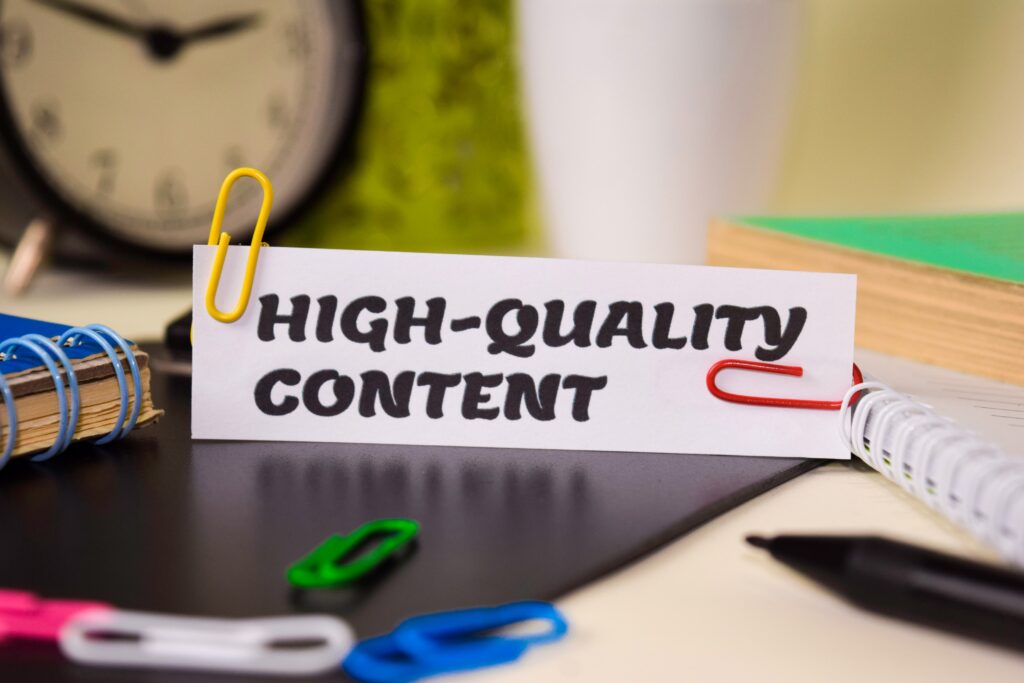
If you’ve just started working on improving your website’s SEO, welcome to the journey! SEO (Search Engine Optimization) is a powerful tool that helps your website get noticed by search engines like Google, which in turn helps you reach more people.
However, it’s easy to make mistakes that can slow down your progress. Let’s dive into some of the most common SEO mistakes and, more importantly, how you can fix them.
1. Not Doing Keyword Research
You might think you know what your audience is searching for, but going off assumptions can lead to targeting the wrong keywords. Without proper keyword research, you might end up optimizing for terms no one is searching for or keywords that are too competitive.
How to fix it
Use keyword research tools like Google Keyword Planner, Ahrefs, or Ubersuggest. Start by identifying keywords that are relevant to your niche but not too competitive. You want to find that sweet spot where people are searching for a term, but big players do not dominate it. Once you have your keywords, naturally incorporate them into your content, headings, and meta descriptions.
2. Ignoring On-Page SEO
Some beginners forget to optimize key on-page SEO elements like title tags, meta descriptions, and header tags (H1, H2, H3). Without these, search engines might struggle to understand what your page is about.
How to fix it
Each page on your website should have a unique and descriptive title tag and meta description. The title tag is one of the first things Google looks at to figure out what your page is about, while the meta description is what searchers see in the results.
For example, if you’re writing a blog about “10 Tips for Healthy Eating,” your title tag could be:
“10 Tips for Healthy Eating | Simple and Practical Advice for a Balanced Diet.”
This not only tells Google what the page is about but also gives the user a reason to click. Don’t forget to use H1, H2, and H3 tags to break down your content and make it more readable for both users and search engines.
3. Creating Low-Quality Content

Filling your site with low-quality content just to hit a certain word count or post frequency doesn’t work. Search engines prioritize high-quality, useful content, and stuffing pages with fluff or keywords will only hurt your rankings in the long run.
How to fix it
Focus on creating valuable content that answers your audience’s questions and solves their problems. Your goal is to keep people on your page and engage them. Long content can be great, but make sure it’s well-structured, relevant, and informative. Always aim to write for people first, then optimize for search engines.
4. Neglecting Mobile Optimization
With more and more people browsing on their phones, not having a mobile-friendly website can hurt your SEO. Google now uses mobile-first indexing, which means it primarily uses the mobile version of your site to rank pages.
How to fix it
Make sure your website is responsive and works well on all devices, especially mobile. You can use Google’s Mobile-Friendly Test to check how your site performs on mobile devices. If it’s not mobile-friendly, consider working with a web developer to make the necessary changes.
Mobile optimization not only helps with SEO but also improves the user experience, keeping people on your site longer.
5. Skipping Image Optimization
Images can slow down your website if they’re not properly optimized. Slow websites lead to poor user experiences, which can affect your rankings. Plus, search engines can’t “see” images the way humans do, so they rely on other signals like alt text to understand them.
How to fix it
Compress your images before uploading them to reduce their size without sacrificing quality. Tools like TinyPNG or ImageOptim can help. Also, don’t forget to add descriptive alt text to each image. Alt text helps search engines understand what the image is about and also improves accessibility for visually impaired users.
For example, instead of uploading an image with the filename IMG_001.jpg, rename it to something like fresh-green-salad.jpg and add alt text like “A fresh green salad with tomatoes, cucumbers, and avocado.”
6. Not Optimizing for Local Search
If you run a local business but aren’t optimizing for local SEO, you’re missing out on potential customers nearby who are searching for services like yours.
How to fix it
Start by claiming and optimizing your Google Business Profile (formerly Google My Business). Make sure your name, address, and phone number (NAP) are consistent across all platforms, including your website and social media. Use local keywords in your content, and try to get backlinks from other local businesses or directories to improve your local search rankings.
7. Not Building Backlinks

Backlinks (links from other websites pointing to your website) are one of the most important ranking factors for SEO. If you’re not actively building backlinks, your site might not rank as high as it could.
How to fix it
Start building relationships with other sites in your industry. You can write guest posts, collaborate on projects, or reach out to bloggers for link-building opportunities. However, avoid spammy backlink tactics, like buying links or getting them from irrelevant sites, as this can do more harm than good.
8. Not Monitoring Your Progress
Some people make changes to their SEO and then forget to track the results. Without monitoring your progress, you won’t know if your efforts are paying off or if you need to adjust your strategy.
How to fix it
Use tools like Google Analytics and Google Search Console to track your website’s performance. Pay attention to metrics like organic traffic, bounce rates, and the keywords you’re ranking for. Regularly review this data to see what’s working and what isn’t. This will help you make data-driven decisions to improve your SEO efforts continually.
9. Having a Poor Internal Linking Structure
Internal linking is an often overlooked but vital SEO tactic. If you’re not linking to other pages on your site, you’re missing an opportunity to help search engines and users navigate your website.
How to fix it
Whenever you write new content, try to link to other relevant pages on your site. For example, if you’re writing a blog post about healthy recipes, link to another post about kitchen gadgets. This not only helps search engines understand the structure of your site, but it also encourages users to stay on your site longer, which can improve your SEO.
SEO Is a Journey
SEO can feel overwhelming at first, but once you understand these common mistakes and how to fix them, you’re on your way to improving your website’s visibility. Start with these basics, and remember that SEO is a long-term strategy. You won’t see results overnight, but with consistent effort and regular optimization, you’ll be in a great position to succeed.
Got questions? Drop them in the comments, and let’s work together to make SEO less intimidating!
Need Help with Your SEO?
Navigating SEO can be tricky, but you don’t have to do it alone! If you’re looking for professional help to improve your website’s rankings, boost organic traffic, or optimize your content for better visibility, Wambui Njuguna offers expert SEO services. With over 6 years of experience and a proven track record in crafting high-ranking content, Wambui can help you take your SEO to the next level.
Reach out today to start your journey toward better search engine performance!

Leave a Reply